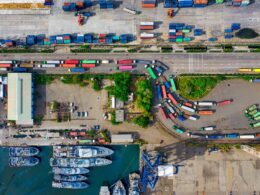With the twists and turns that the ever-lengthening Brexit process is taking, as well as the latest (somewhat ironic) deadline of Halloween, it’s anyone’s guess what the final outcome will be. It’s definitely the most convoluted, tiresome episode of deal or no deal I’ve ever seen, and isn’t particularly helpful for businesses trying to mitigate the risks that leaving the EU may bring.
There are, however, a number of simple yet often overlooked measures your company should be taking to protect its supply chain against the effects of Brexit.
Assess your key strengths and weaknesses
A pretty straightforward way of assessing the strengths and weaknesses of your supply chain is to map it out geographically. Once you’ve visualised where your suppliers are based nationally and across the globe you can work back from there, giving better sight of supply chain routes and potential border issues that could be encountered post-Brexit.
Don’t forget your suppliers’ suppliers as well though. It’s key to bear in mind secondary suppliers when assessing supply chain risk, as any issues they face will mean knock on results for your business. If you’re able to identify hotspots of risk across both primary and secondary suppliers, this gives you the best chance of formulating effective contingency plans.
As with most business functions, the more data and the better maintained your logs are, the easier it will be to identify areas of concern and opportunities for improvement. It’s certainly an ongoing commitment, but in the long run, having access to extensive historical data will facilitate more informed decisions on business strategy.
Other considerations
If I asked you what the major risks of Brexit are to the supply chain, I’m pretty sure you’d refer to tariffs, exchange rates and border controls. But there are lesser-known factors to consider.
Introducing instability into a relatively stable supply chain is bound to throw up some challenges. Perhaps not completely unexpectedly, we do expect to see more UK-based companies seeking domestic suppliers rather than those overseas.
We only have a limited supply capacity in the UK, and it will be interesting to see if this benefits the UK economy (as promised by some Brexiteers) or causes issues for businesses who can’t find a suitable alternative domestically.
Get key stakeholders on board
If you are responding to risk or issues, it is very much a fast, short-term period of activity which ensues. When mitigating risk though, you have the best chance of success through a collaborative, ongoing strategy. This means ensuring that all key stakeholders are on board and that they understand these actions right from the beginning.
Board members and key decision makers responsible for giving the green light to strategic changes tend to react best to facts and figures. Working in conjunction with a procurement consultant, you should present the imminent, negative business implications of ignoring such risks and potential financial loss to get their attention and ensure buy-in on your ideas.
All in all, of course nobody has any idea how Brexit will play out over the next few months, but you’ll fall at all future hurdles if you do nothing to prepare. Now is the time to put in the groundwork to mitigate risk and plan ahead, that way you and your business will reap rewards in the long term.
By Steve Trainor
About the author
Steve Trainor, chief operating officer at Odesma

Steve has over 28 years of success as CPO, MD and procurement BPO leader in a range of industries, and is responsible for Odesma’s delivery capability and infrastructure. Since founding Odesma alongside his business partners, Steve has led the delivery of a number of transformation and cost-reduction projects for clients across multiple industry sectors and geographies.













